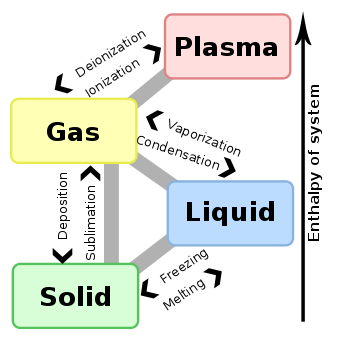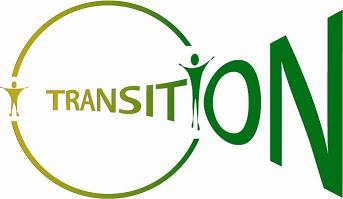
Instructional Materials for Craig White's Literature Courses
|
Transitions: "Signal" Words & Phrases
|
|
For writers, "transitions" are the various ways for maintaining unity or continuity between parts of speech or writing, especially from one paragraph to the next but also from sentence to sentence (or chapter to chapter, etc.).
Definitions first . . . scroll down for types of transitions.
Transition: 1.a. A passing or passage from one condition, action, or place, to another; change. 2. Passage in thought, speech, or writing from one subject to another. (Oxford English Dictionary)
Dictionary.com: 1.
movement,
passage,
or
change
from
one
position,
state,
stage,
subject,
concept,
etc.,
to
another;
change. Example:
the
transition
from
adolescence
to
adulthood.
3.
a
passage
from
one
scene
to
another
by sound effects,
music,
etc.,
as
in
a
television
program,
theatrical
production,
or
the
like. [compare segue]
[Another example: When one U.S. presidency ends and another begins, the new president appoints a "transition team."]
About.com: The connection (a word, phrase, clause, sentence, or entire paragraph) between two parts of a piece of writing, contributing to cohesion.
![]() "A
transition is anything
that links one sentence—or paragraph—to another. Nearly every sentence,
therefore, is transitional. Coherent writing . . . is a constant process of transitioning." — Bill Stott, Write to the
Point: And Feel Better About Your Writing, 2nd
ed. Columbia University Press, 1991.
"A
transition is anything
that links one sentence—or paragraph—to another. Nearly every sentence,
therefore, is transitional. Coherent writing . . . is a constant process of transitioning." — Bill Stott, Write to the
Point: And Feel Better About Your Writing, 2nd
ed. Columbia University Press, 1991.
![]() "Transitional words and phrases provide
the glue that holds
ideas together in writing. They provide coherence (hanging together, making
sense as a whole) by helping the reader to understand the relationship between
ideas, and they act as signposts that help the reader follow the movement of the
discussion. Transitional expressions, then, can be used between sentences,
between paragraphs, or between entire sections of a work." — Robert Harris,
Virtual Salt
"Transitional words and phrases provide
the glue that holds
ideas together in writing. They provide coherence (hanging together, making
sense as a whole) by helping the reader to understand the relationship between
ideas, and they act as signposts that help the reader follow the movement of the
discussion. Transitional expressions, then, can be used between sentences,
between paragraphs, or between entire sections of a work." — Robert Harris,
Virtual Salt
![]()
Types or Options
Option 1: Transitional or “Signal” Words and Phrases
(These are the most obvious transitions, and therefore a good entry for learning,
but Options 2 & 3 are more subtle and reliable.)
|
Addition or sequence:
(most obvious & least complex)
Comparison:
(less obvious, more sophisticated)
Contrast:
(less obvious, more
sophisticated)
Cause: (prestigious & sophisticated)
Effect:
(prestigious &
sophisticated)
Purpose:
(prestigious &
sophisticated)
Time:
(fairly obvious & unsophisticated but often
essential) |
Place:
(obvious but often
essential)
Exemplification or Illustration:
(obvious but often
essential)
Clarification or Reinforcement: (obvious but often essential)
Qualification:
(to "qualify a statement" means to modify or moderate it by
adding some limit or reservation; to make less strong, positive, or absolute)
(obvious but often
essential)
Intensification: (obvious but sometimes essential)
Concession:
(often
essential to fairness)
Summary: (obvious but often essential)
Conclusion:
(obvious but sometimes
essential)
|
![]()
Alternatives to "transitional / signal words and
phrases”
![]() Option 2: Demonstratives—this,
that, these, those, such—act as transitions, connectors, or spacial
pointers.
Option 2: Demonstratives—this,
that, these, those, such—act as transitions, connectors, or spacial
pointers.
Demonstrative words can function as either adjectives or pronouns.
Examples of demonstrative adjective: "When early settlers reached the American mainland and began to explore, we can imagine something of the sense of awe induced simply by the sheer scale of the continent. Coming from England or Spain, these unsuspecting people were entering a space approximately thirty-eight times the size of the British Isles or eighteen times the size of Spain." (J. Anderson, Early American Literature midterm)
“'Excuse me! Professor! Should we be reading this as fiction or non-fiction?' Every so often, I hear this question asked in class and wonder to myself: is there a difference?" (T. Dion, Early American Literature midterm)
Examples of demonstrative pronouns:
"The Puritans wanted a utopian community, which John Winthrop in 'A Model of Christian Charity' describes as one in which 'every man might have need of other, and from hence they might be all knit more nearly together in the bonds of brotherly affection.' He also refers to this utopian community as 'a city upon a hill.' This is how these courageous people came to a new world and helped create America." (D. Iven, Early American Literature midterm)
(Possible additions to list of demonstrative adjectives: Yonder, yon; former, and latter; on the one hand, on the other hand?)
![]()
![]() Option 3: Repetitions of key words and phrases
link sentences and paragraphs (& reinforce theme or thesis).
Option 3: Repetitions of key words and phrases
link sentences and paragraphs (& reinforce theme or thesis).
Repeating key words or phrases at intervals helps thematic continuity by reminding reader of previous emphases and continuing line of though.
(examples forthcoming)
![]()
![]() Option 4:
Pronouns
serve as links if they
clearly refer to a
preceding
word or phrase: his, her, it, its, they, their, theirs, our, your,
Option 4:
Pronouns
serve as links if they
clearly refer to a
preceding
word or phrase: his, her, it, its, they, their, theirs, our, your,
(examples forthcoming)
![]()
![]() Option 5:
Parallel structure
(repetition of a first word
[anaphora], sentence pattern or grammatical
structure in a sentence) strengthens relations between sentences.
Option 5:
Parallel structure
(repetition of a first word
[anaphora], sentence pattern or grammatical
structure in a sentence) strengthens relations between sentences.
![]()
(Gary Provost, 100 Ways to
Improve Your Writing. Mentor, 1972)

Arrows indicate "transition states" of Matter
(Some materials on this webpage are adapted from a handout developed by the
Writing Center,
English Department, H.C. White Hall,
University of Wisconsin‑Madison)

